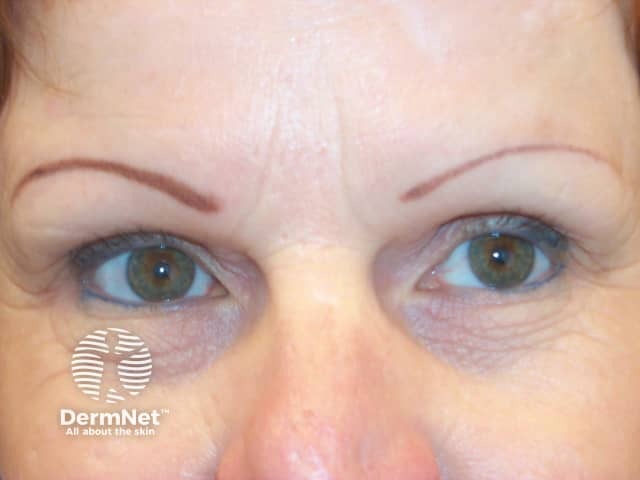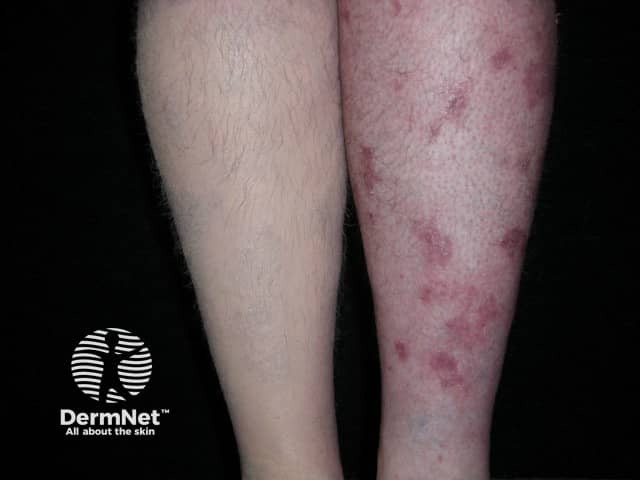Main menu
Common skin conditions

NEWS
Join DermNet PRO
Read more
Quick links
Cosmetic camouflage is the application of creams, liquids and/or powders to conceal colour or contour irregularities or abnormalities of the face or body. Cosmetic camouflage creams were first developed by plastic surgeons during World War II to cover the massive burns received by fighter pilots. Nowadays, men, women and children can use cosmetic camouflage to conceal abnormalities caused from:
Cosmetic camouflage has been shown to improve the quality of life significantly. It improves patient self-esteem and creates a sense of personal well-being.
There are 3 basic approaches to cosmetic camouflage.
Concealing – concealers are often thicker and more opaque than regular foundation makeup. They effectively cover healed incision lines from surgery, scars and/or bruises on your face or body. Concealers are usually creamy products and come in a variety of shades to match the natural colour of the skin. Sometimes they are blended with colour correctors to achieve a good colour match. Liquid colour-matched concealers are also available that can closely resemble normal skin.
Colour correcting – colour correctors are used to disguise the yellowish shade of a bruise or the overall redness from a burn. Colour correctors come in tints, purple corrector blended with concealer neutralises yellow skin tones, while green corrector yields a brown tone to neutralise redness.
Contouring – contouring corrects the irregular facial surface contours by creating dimension using light and shadow. Dark colours make swellings or protrusions appear to recede, while light colours make surface depressions appear shallower. To achieve contouring you need a highlighter, which is about 2 shades lighter than your concealer, and a contour shadow, which is about 2 shades darker. Powdered blush-type products are best suited for contouring.
Camouflage makeup needs to be removed from your face and neck every night before you go to bed. Because of their waterproof nature, an oily cleansing cream or lotion may be needed to wipe off the makeup. Follow by cleaning with soap and water or your normal facial cleansing routine. Liquid camouflage products and camouflage cosmetics used elsewhere on the body can be left on for 3 or 4 days before removing them and re-applying.

Tattooing (left eyebrow) and additional pencil (right eyebrow)

Psoriasis disguised by cosmetic camouflage on right leg
It may take some practice to achieve a satisfactory final appearance. In some countries, hospitals, charities or societies hold cosmetic camouflage clinics where individual's camouflage requirements are assessed. For example, Look Good Feel Better®, a charitable programme sponsored by the Cosmetic Toiletry and Fragrance Association (CFTA) and organised by the Cancer Society in New Zealand, runs cosmetic workshops throughout the country to improve the self-esteem of women dealing with the side-effects of cancer. Similar programmes are available in the USA and many other countries.
Standard everyday makeup may be sufficient for your needs. The important thing is to use products that do not irritate your skin. Your doctor or dermatologist may recommend special cosmetic camouflage products available through your pharmacy or special clinics.